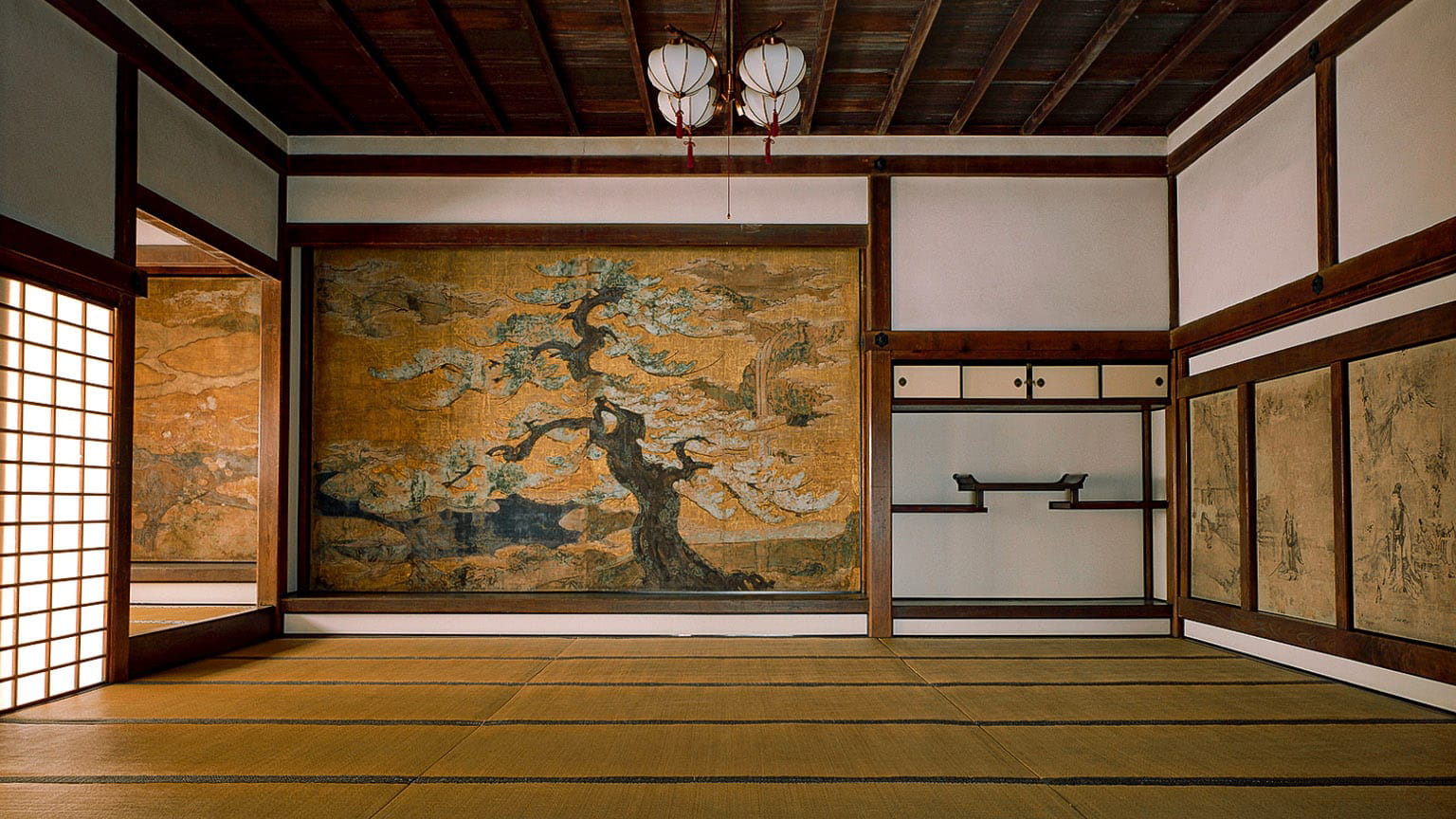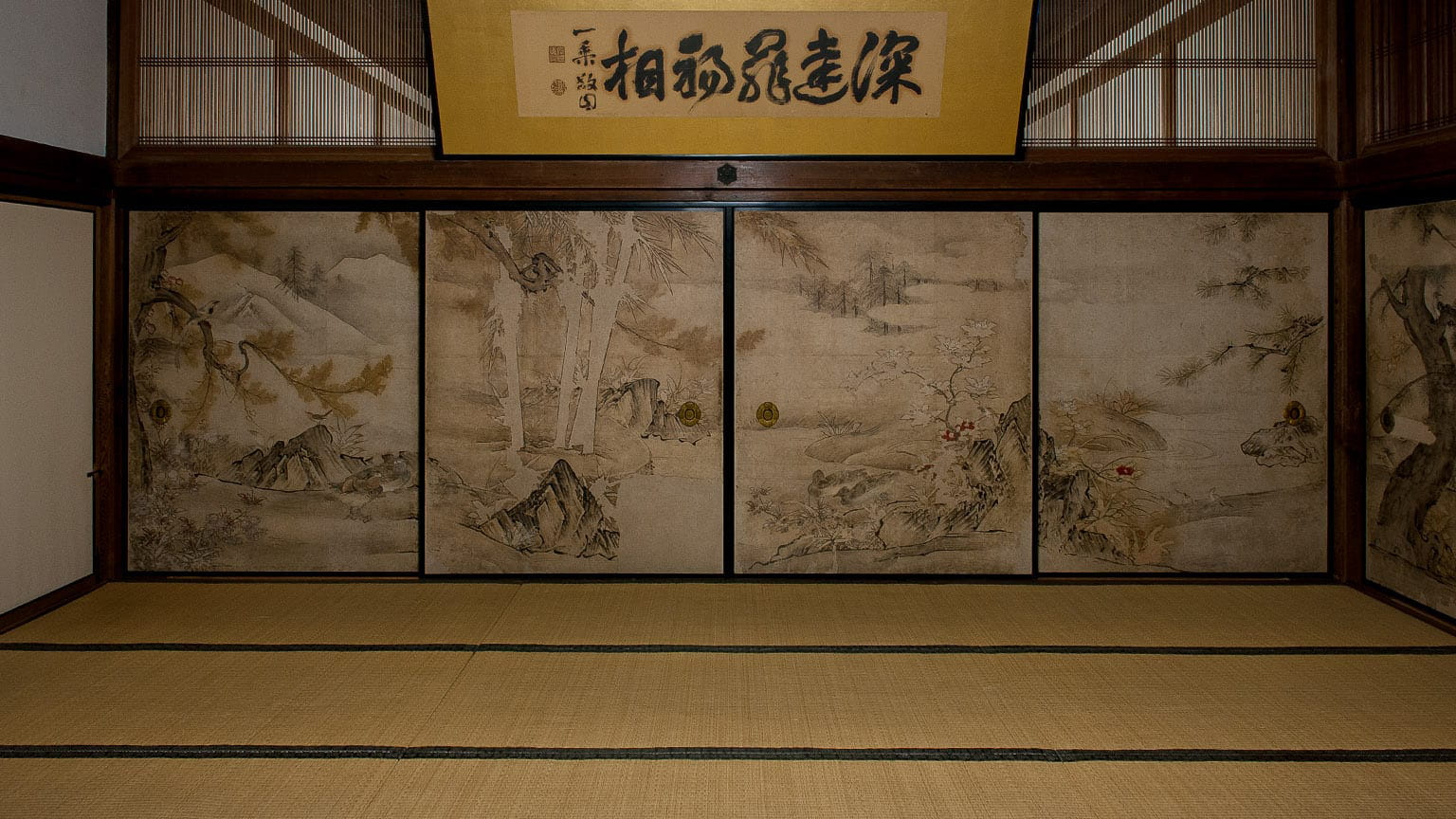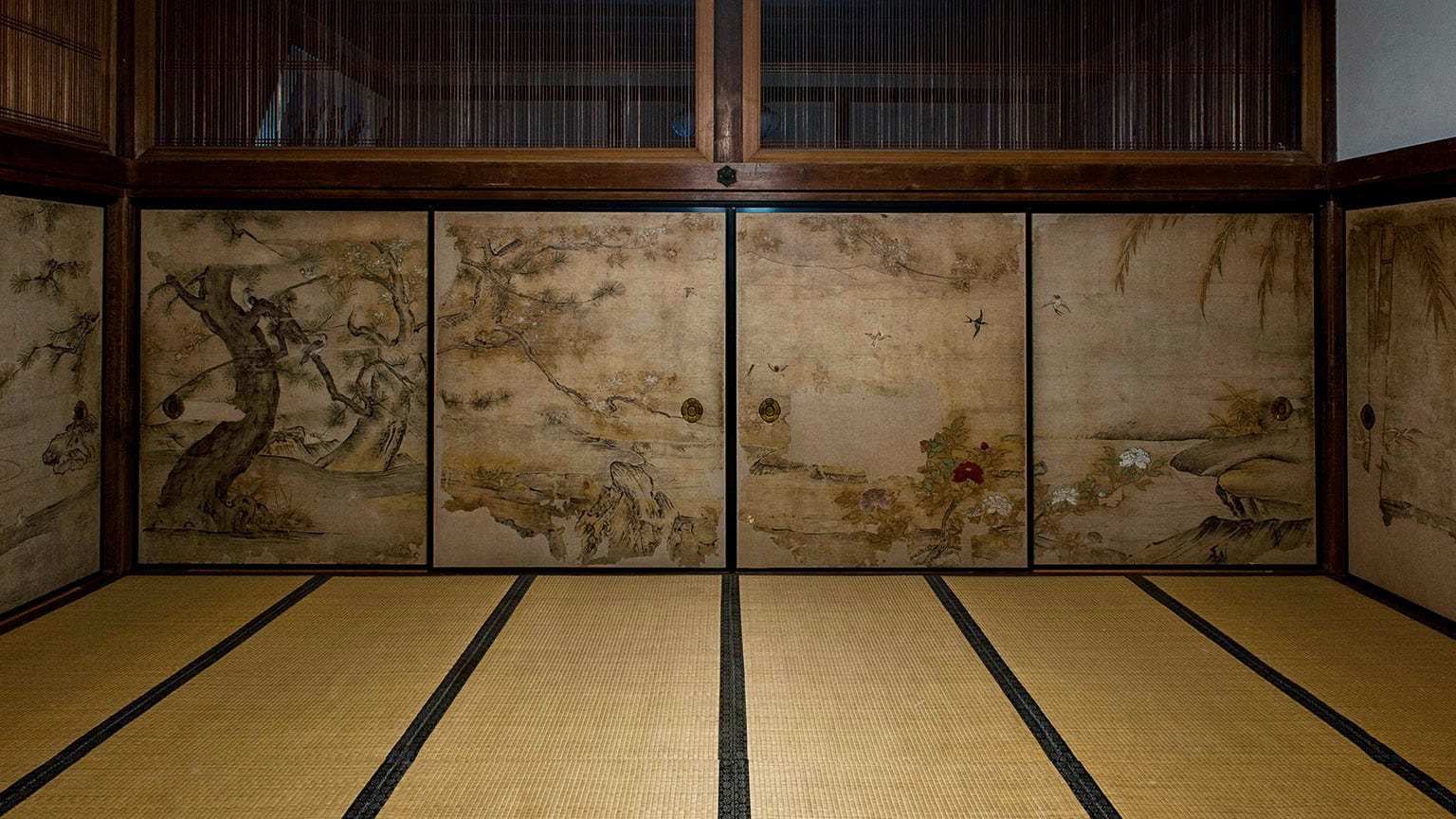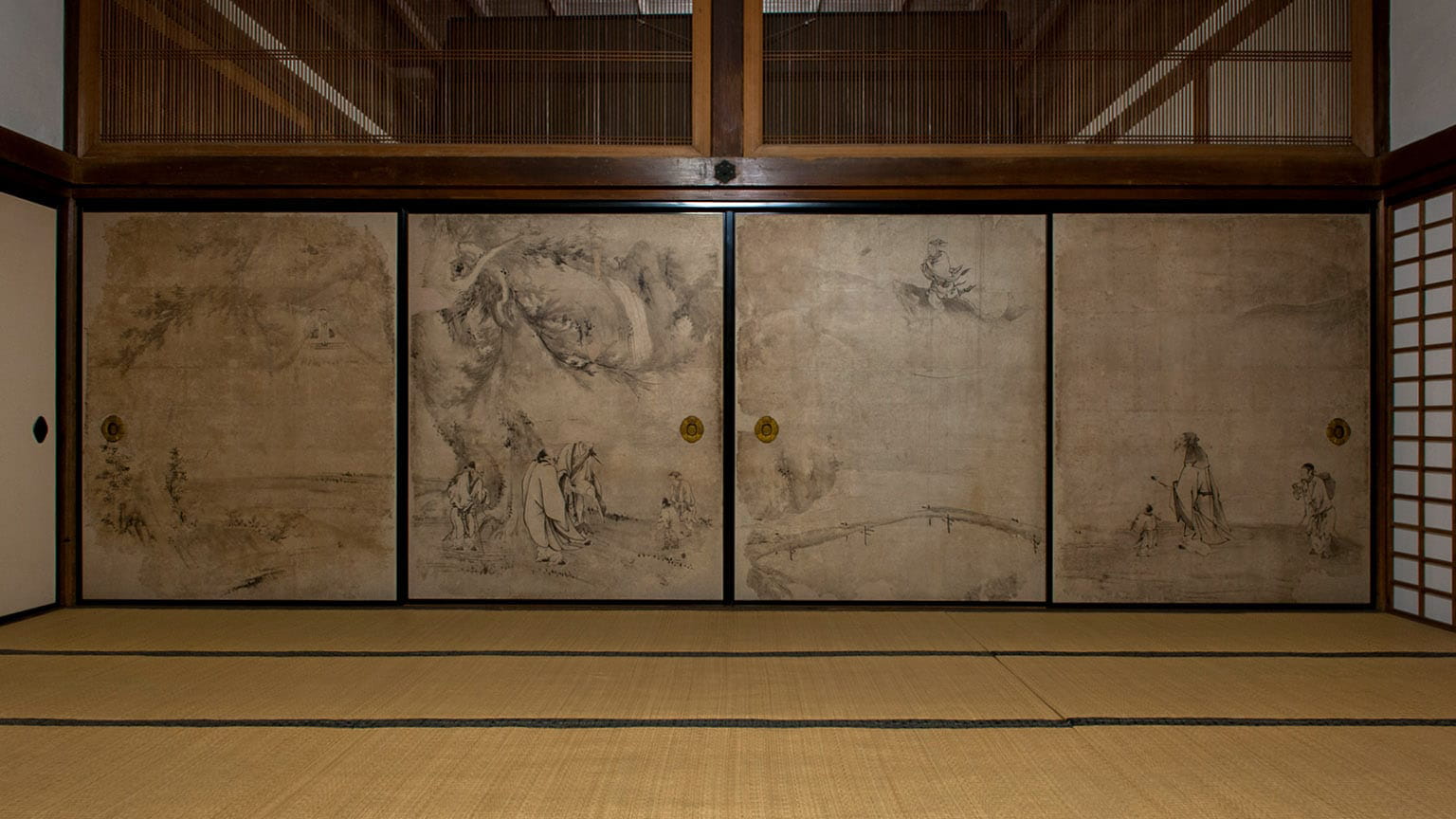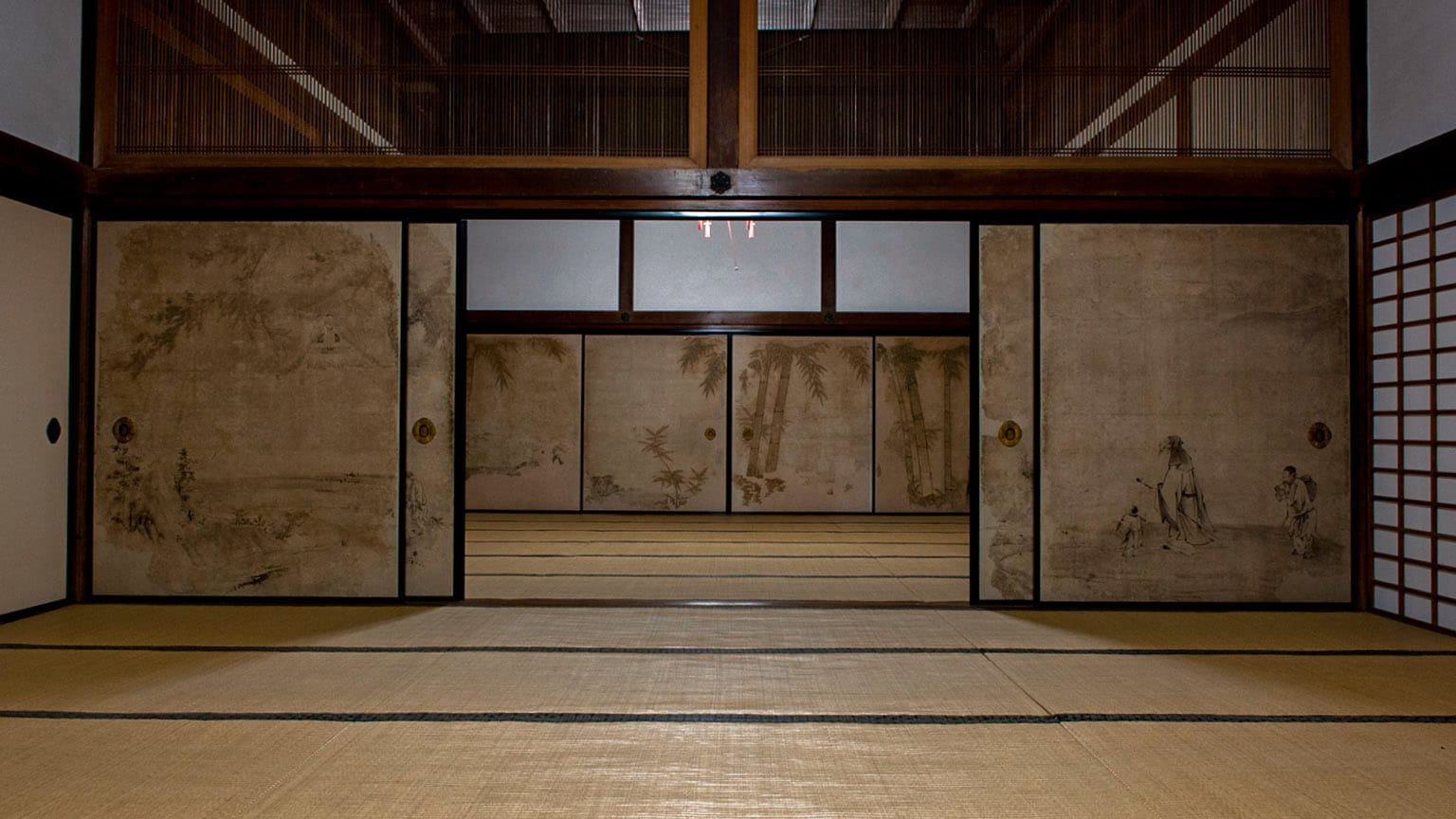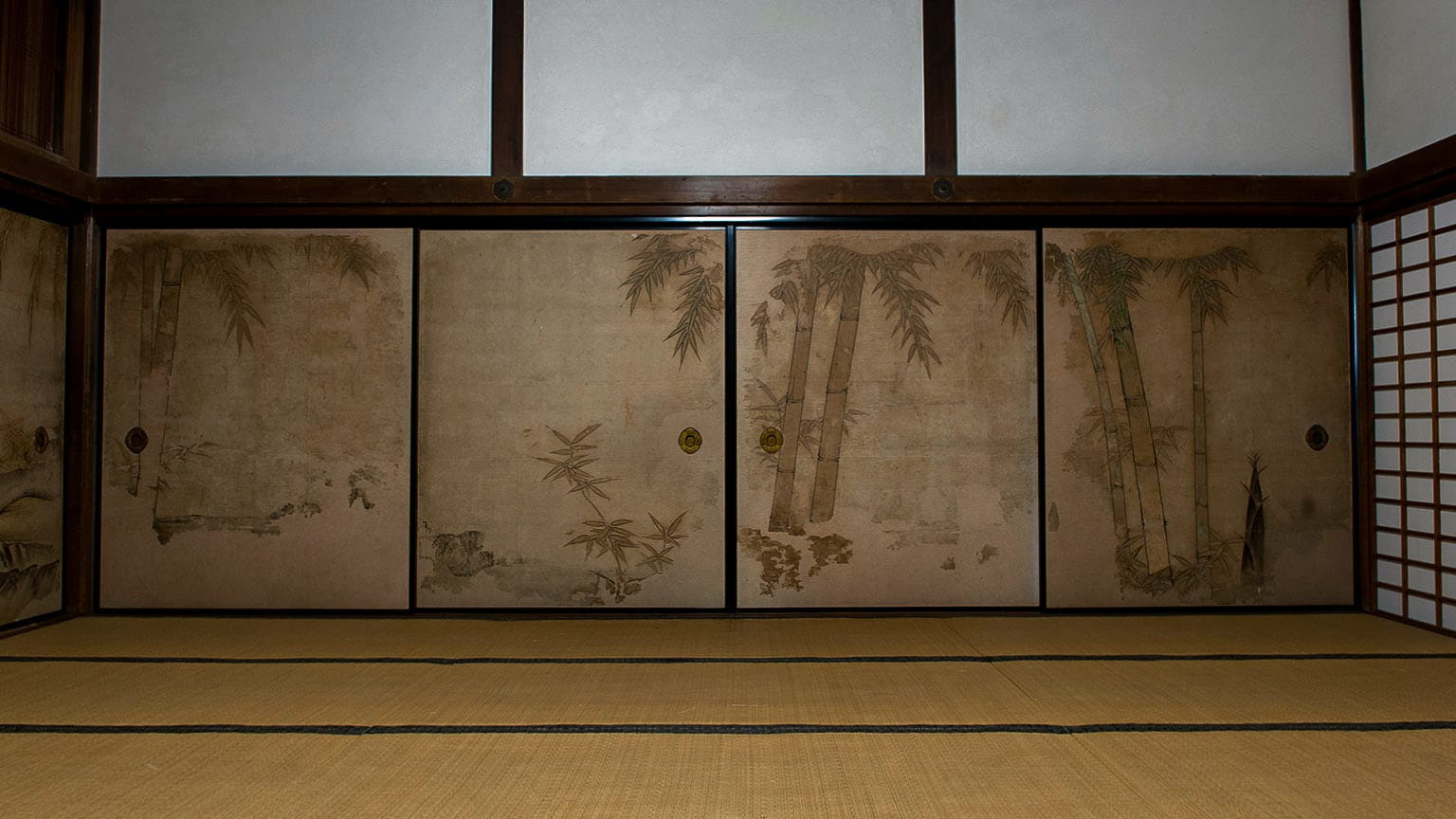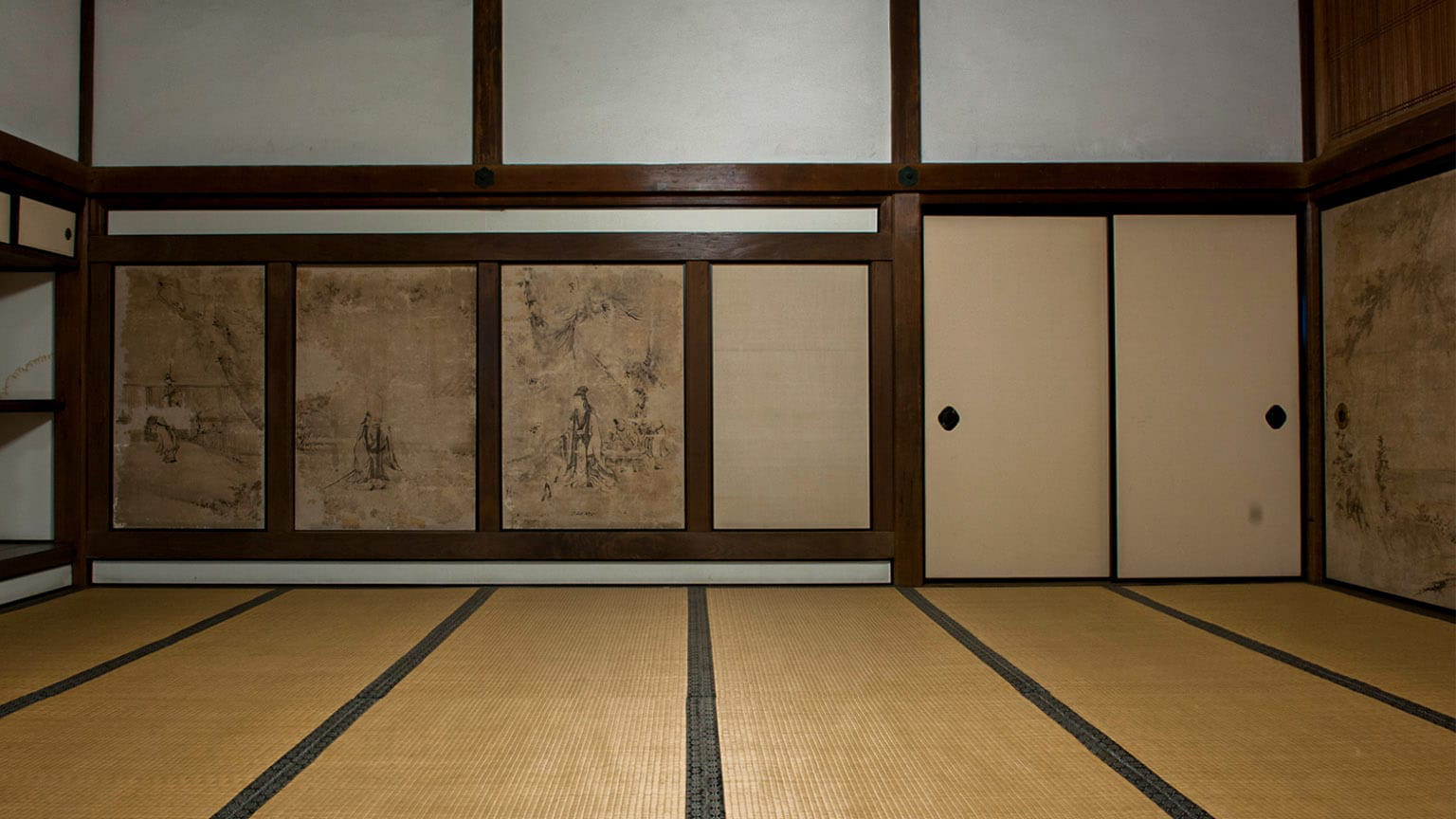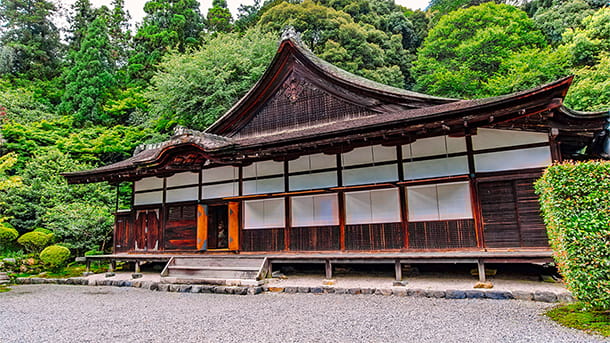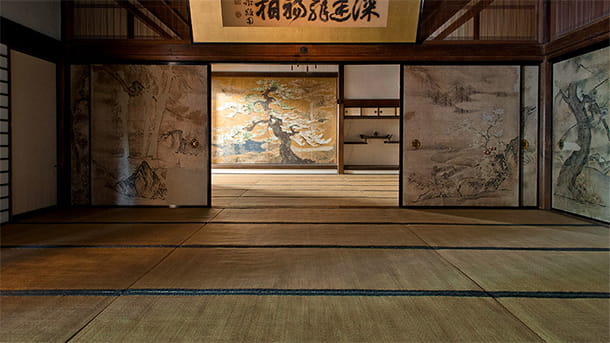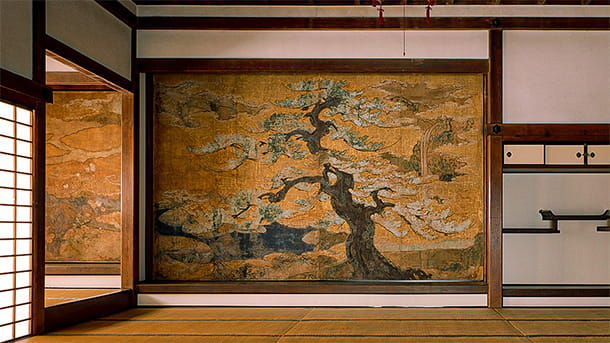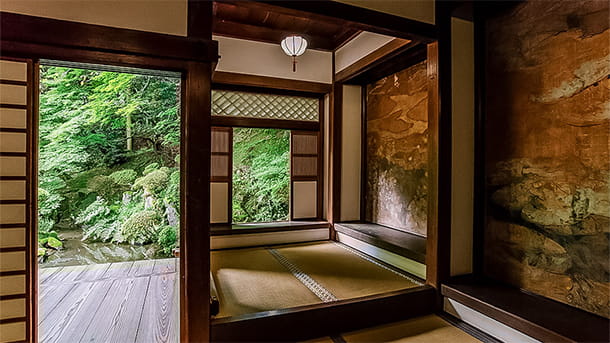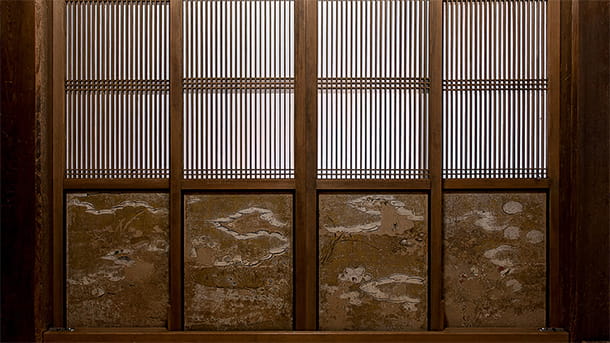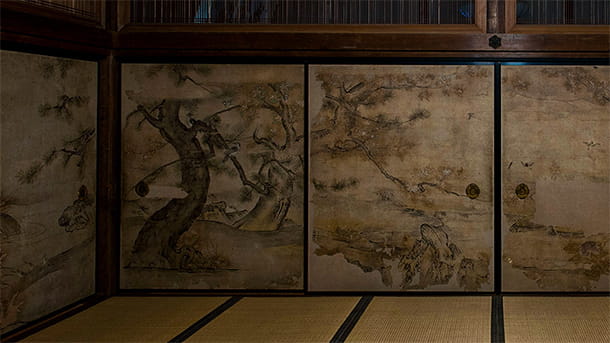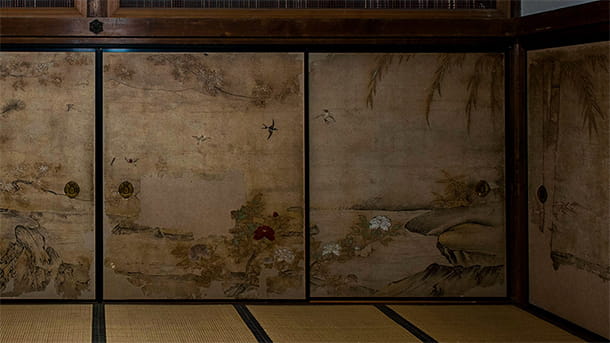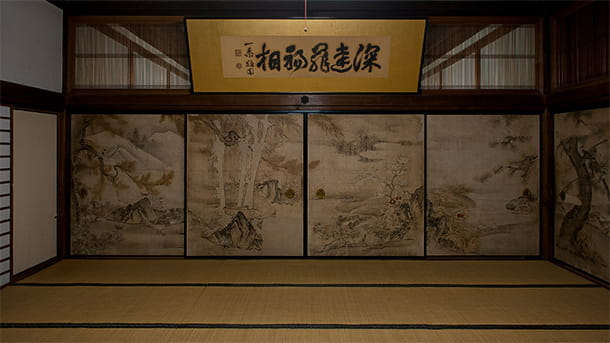Cultural Property of Japan
Kojoin Reception Hall Screen Paintings (25 Screens)
READER
Screen paintings by the Kano school are preserved in the two rooms in the southern corridor of the Kojoin Reception Hall. These gorgeous works display the unique characteristics of the late Momoyama period (1573–1600). The gold-grounded “Pine Tree and Waterfall” colored screen painting in the large alcove of the ichi-no-ma chamber displays the typical screen-painting style of the time. The “Chrysanthemum Flowers” screen painting on the top level of the tsuke-shoin alcove is another elegant series of works, closely resembling the style of Kano Sanraku, who the temple claims to be the artist responsible.
The screen paintings on twenty fusuma sliding doors in the ni-no-ma chamber, meanwhile, use colors on unprimed paper to depict flowers and birds throughout the four seasons. The four screens on the north side show scenes of spring and summer, with pine trees distributed on the two left-hand screens while large peony blossoms bloom by water and swallows flutter about on the two right-hand screens. The four screens on the west side shift through the seasons to autumn and winter, depicting sasanqua and chrysanthemum flowers interspersed with wild and mandarin ducks, while a snowcapped mountain stands in the background. Each set of works is notable for showing a unique sense of individuality, even when compared with other paintings by the Kano school.
Please rate this cultural heritage introduction page.
-
-
Satisfaction
-
-
Understanding
-
-
Recommendation
-
-
Attractiveness
-


